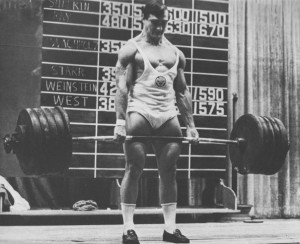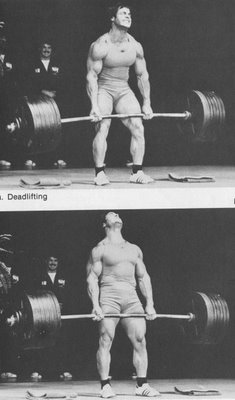5×5 training is an old-school, time-tested training method for building size and strength. This system was first made popular by legends such as Bill Starr. There’s a reason for this set/rep scheme’s popularity–it works.

5×5 for Beginners
This training template is ideal for beginners for several reasons:
1. It’s simple. The longer I train, the more I appreciate simple programs. New trainees especially don’t need to get caught up in overly advanced training techniques.
2. There’s a good balance of volume and intensity. Beginners are still relatively weak and learning good form, so it would seem they benefit from repeated sets like this. But beginners may find they do just as well with only 3 or 4 sets of five (3×5, for example–one or two warm-up sets, then three work sets).
3. This rep range is also a good balance of size and strength building. I’ve studied weight training for a long time. Here’s what most of the guys I respect agree on: somewhere in the 5-8 rep range is where most people will get their best strength/size gains. Once you get more advanced you may want to experiment with higher reps for mass and lower reps for absolute strength. But a beginner’s best bet of gaining muscle is to get stronger in the important lifts (deadlift, squat, etc).
5×5 for Advanced Lifters
I’ve found that 5 sets of 5 reps is a little bit too much volume for me, and I think other more advanced trainees will have similar experiences. I remember trying to do 5×5 on squats a year or so ago with about 350 lb. That may not be much for some of you, but it sure felt heavy to me–especially after a couple of sets. Keep in mind also that I train in a hot climate in a gym with no air conditioning. I somehow managed to finish all five sets, but I literally had to sit on the floor as soon as I finished. I felt like I was going to pass out. I left the gym after I rested enough to be sure I wasn’t going to black out. That may sound like the perfect “hardcore” workout, but I’m interested in getting bigger and stronger–not fainting.
Anyway, here are some modifications you could implement if you are a more intermediate/advanced trainee who wants to do 5×5:
1. Work up to one maximum effort set of 5, then move on to your assists lifts (your assists lifts would be higher rep range, like maybe 8-12 reps).
2. Hit your maximum effort 5 reps, then drop about 10% of the weight. That’s the weight you’ll use for your last set. After that move on to your assist lifts.
3. Work up to your set of 5, but not to the point of complete exhaustion. Then see if you can do another 4-5 reps with the same weight on your next set. Some may find this works best for them (some trainees just won’t hit their “peak” until that second set).
4. Work to a max set of five then do some high rep work for your next sets (I like this method for squats).
These are just some ideas I’ve picked up from different trainers/authors.
I’d highly recommend you check out some of my recommended workout programs if you’d like a more detailed guide to training.
